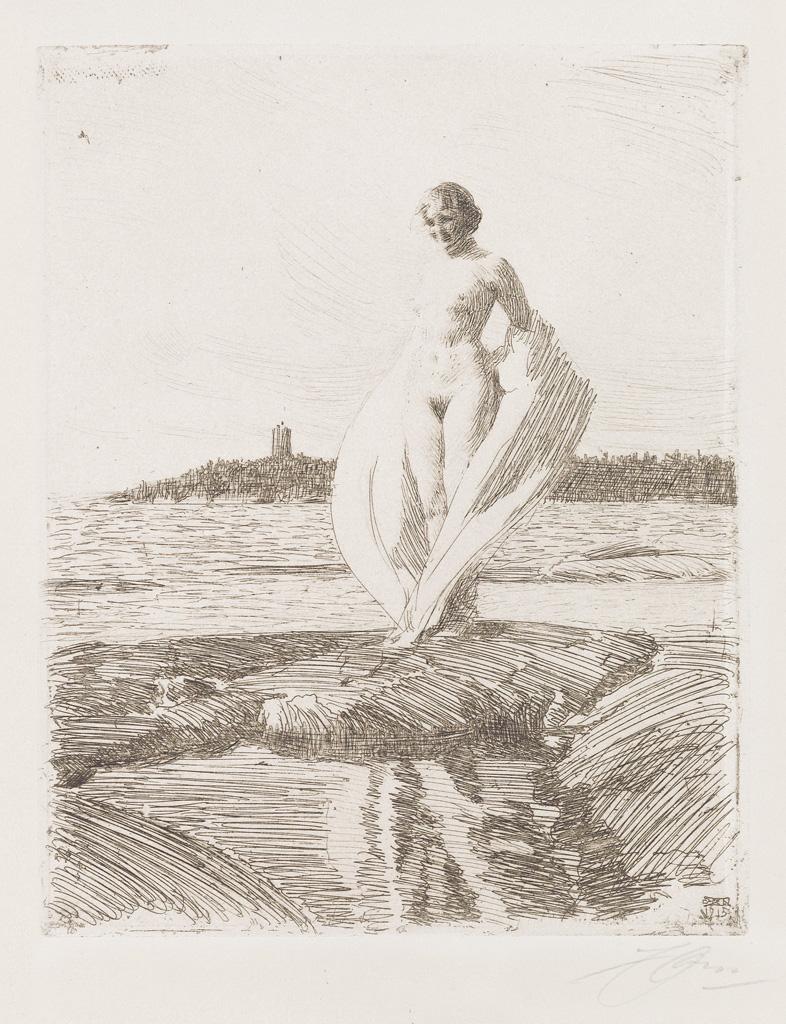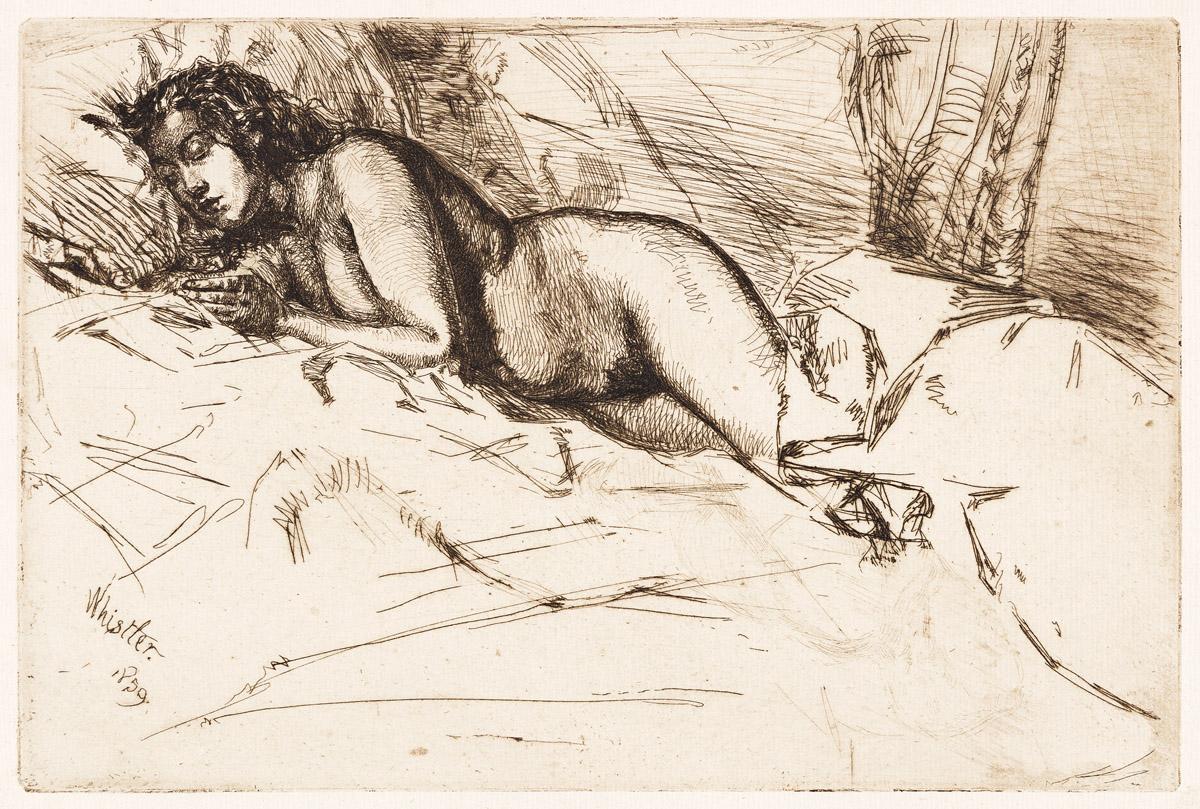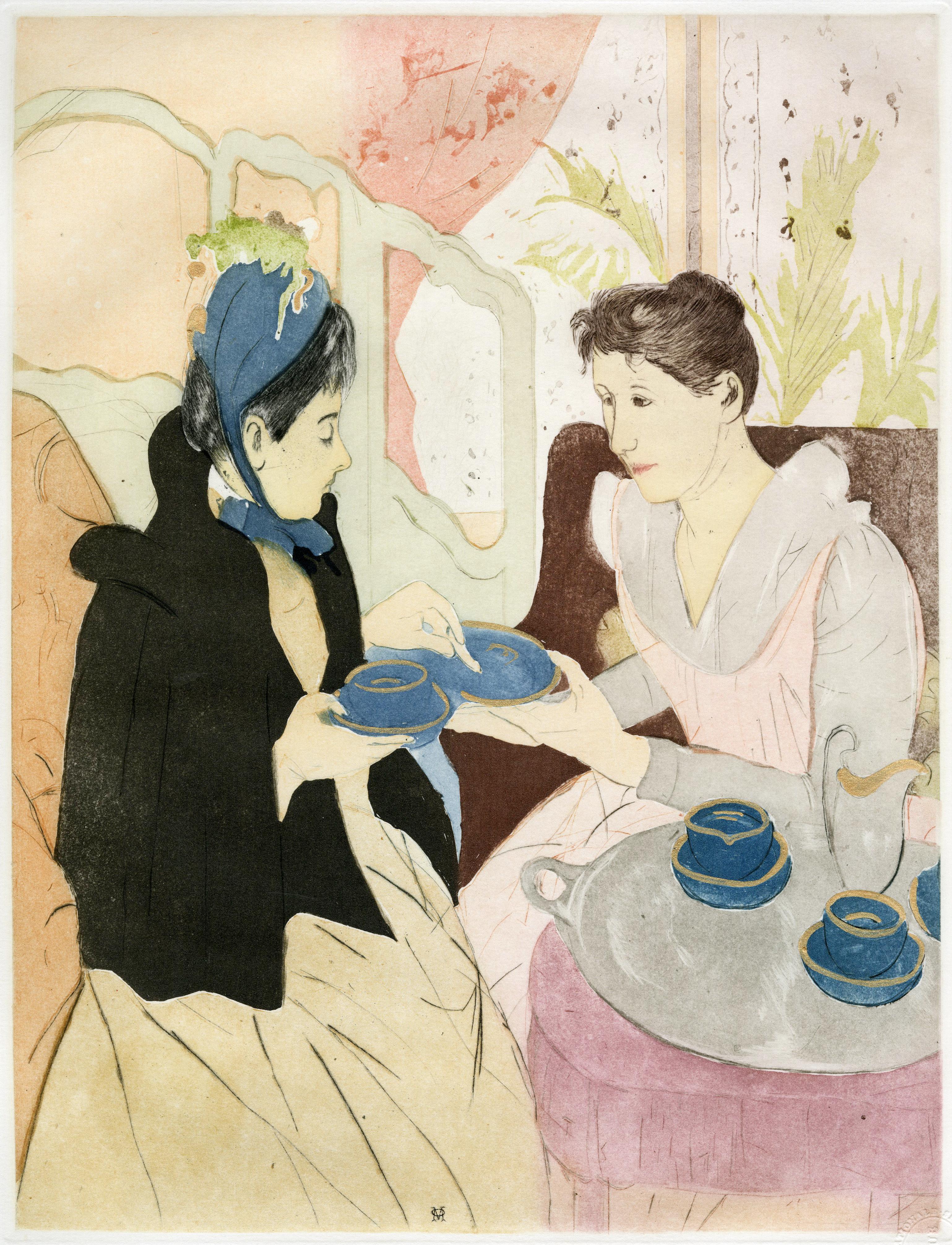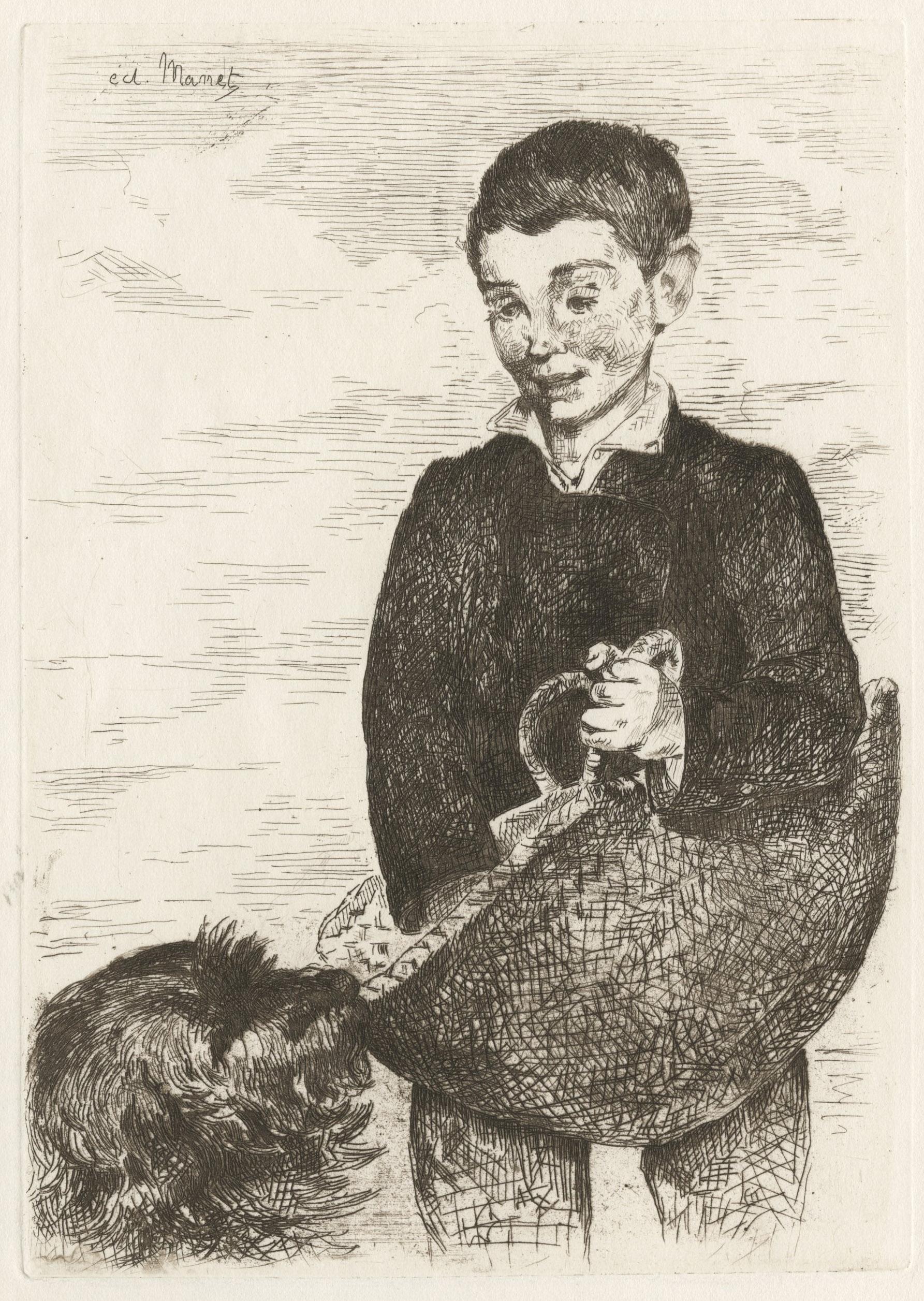Camille PissarroQuai de Paris, à Rouen by Camille Pissarro - Cityscape etching1896
1896
About the Item
- Creator:Camille Pissarro (1831-1903, French)
- Creation Year:1896
- Dimensions:Height: 7.09 in (18 cm)Width: 6.89 in (17.5 cm)
- Medium:
- Movement & Style:
- Period:
- Condition:
- Gallery Location:London, GB
- Reference Number:1stDibs: LU261214154742
Camille Pissarro
Camille Pissarro was one of the most influential members of the French Impressionist movement and the only artist to participate in all eight Impressionist exhibitions.
Born in July of 1830 on the island of Saint Thomas in the Danish West Indies, Camille was the son of Frédéric and Rachel Pissarro. At the age of 12, he went to school in Paris, where he displayed a penchant for drawing. He returned again to Paris in 1855, having convinced his parents to allow him to pursue a career as an artist rather than work in the family import/export business. Camille studied at the Académie Suisse alongside Claude Monet, and, during this time, he met Paul Cézanne, Édouard Manet and Pierre-Auguste Renoir.
In 1869, Camille settled in Louveciennes. The outbreak of the Franco-Prussian War in 1870 prompted him to move to England, and, with Monet, Camille painted a series of landscapes around Norwood and Crystal Palace, while studying English landscape painting in the museums. Upon returning a year later at the end of the War to Louveciennes, Camille discovered that only 40 of his 1,500 paintings — almost 20 years’ work — remained undamaged.
Camille settled in Pontoise in the summer of 1871, remaining there and gathering a close circle of friends around him for the next 10 years. He reestablished relationships with Cézanne, Manet, Monet, Renoir and Edgar Degas, expressing his desire to create an alternative to the Salon, so that their group could display their own unique styles. Camille married Julie Vellay, with whom he would have seven children. Cézanne repeatedly came to stay with them, and, under Camille’s influence, he learned to study nature more patiently, even copying one of Camille’s landscapes in order to learn his teacher’s technique.
The first Impressionist group exhibition, initiated by Monet in 1874, earned the Impressionists much criticism for their art. While mainly interested in landscape, Camille introduced people — generally, peasants going about their rural occupations — and animals into his works, and they often became the focal point of the composition. It was this unsentimental and realistic approach, with the complete absence of any pretense, which seemed to stop his work from finding appreciation in the general public.
One of the few collectors who did show interest in Camille’s work was a bank employee named Paul Gauguin, who, after acquiring a small collection of Impressionist works, turned to Camille for advice on becoming a painter himself. For several years, Gauguin closely followed his mentor, and, although their friendship was fraught with disagreement and misunderstandings, Gauguin still wrote shortly before Camille’s death in 1906: “He was one of my masters, and I do not deny him.”
In the 1880s, Camille moved from Pontoise to nearby Osny, before Eragny, a small village much further from Paris. At a time when he was dissatisfied with his work, in 1885, Camille met both Paul Signac and Georges Seurat. He was fascinated by their efforts to replace the intuitive perceptive approach of the Impressionists with a “Divisionist” method, or scientific study of nature’s phenomena based on optical laws. Despite having reached his mid-50s, Camille did not hesitate to follow the two young innovators. The following year, he passed on this new concept to Vincent Van Gogh, who had just arrived in Paris and was keen to learn of the most recent developments in art. However, after a few years, Camille felt restricted by Seurat’s theories and returned to his more spontaneous technique while retaining the lightness and purity of color acquired during his Divisionist phase.
In the last years of his life, Camille divided his time between Paris, Rouen, Le Havre and Eragny, painting several series of different aspects of these cities, with varying light and weather effects. Many of these paintings are considered among his best and make for an apt finale to his long and prodigious career.
When Camille Pissarro died in the autumn of 1903, he had finally started to gain public recognition. Today his work can be found in many of the most important museums and collections throughout the world.
Find original Camille Pissarro art on 1stDibs.
(Biography provided by Stern Pissarro Gallery)
- ShippingRetrieving quote...Ships From: London, United Kingdom
- Return PolicyA return for this item may be initiated within 7 days of delivery.
- Mère et enfant by Lélia Pissarro - EtchingBy Lelia PissarroLocated in London, GBMère et enfant by Lélia Pissarro (b. 1963) Etching 3 x 3 cm (1 ¹/₈ x 1 ¹/₈ inches) Signed lower left, Lélia Pissarro Inscribed lower right: E.A (artist proof in French) Artist biog...Category
21st Century and Contemporary Impressionist Figurative Prints
MaterialsEtching
- Grand’mère (effet de lumière) (La Mère de l’artiste) by Camille PissarroBy Camille PissarroLocated in London, GBGrand’mère (effet de lumière) (La Mère de l’artiste) by Camille Pissarro (1830-1903) Etching 17.1 x 25.3 cm (6 ³/₄ x 10 inches) Stamped lower right, C.P. and numbered 8/18 Executed i...Category
1890s Impressionist Figurative Prints
MaterialsEtching
- Paysanne au puits by Camille Pissarro - EtchingBy Camille PissarroLocated in London, GBPaysanne au puits by Camille Pissarro (1830-1903) Etching 23 x 19.3 cm (9 x 7 ⁵/₈ inches) Stamped lower left, C.P. and numbered 8/50 Created in 1891 and printed at a later date as a...Category
1890s Impressionist Figurative Prints
MaterialsEtching
- Une Femme Assise by Lucien Pissarro - EtchingBy Lucien PissarroLocated in London, GBUne Femme Assise by Lucien Pissarro (1863-1944) Etching 23 x 13 cm (9 x 5 ¹/₈ inches) Stamped lower right, L.P. and numbered lower left, 10/20 Provenance: John Bensusan Butt Private...Category
1890s Impressionist Figurative Prints
MaterialsEtching
- The Four Seasons - Spring by Lélia Pissarro, SerigraphBy Lelia PissarroLocated in London, GBThe Four Seasons - Spring by Lélia Pissarro (B. 1963) Serigraph 50.5 x 69 cm (19 ⅞ x 27 ⅛ inches) 61.5 x 79 cm (24 ½ x 31 ⅛ inches) Signed and numbered Printed in an edition of 300 ...Category
1990s Impressionist More Prints
MaterialsSilk, Lithograph
- The Four Seasons - Autumn by Lélia Pissarro, SerigraphBy Lelia PissarroLocated in London, GBThe Four Seasons - Autumn by Lélia Pissarro (B. 1963) Serigraph 51 x 69 cm (19 ⅞ x 27 ⅛ inches) 61.5 x 79 cm (24 ¼ x 31⅛ inches) Signed and numbered Printed in an edition of 300 Art...Category
21st Century and Contemporary Impressionist More Prints
MaterialsSilk, Lithograph
- Dans les Cendres (In the embers)By Albert BesnardLocated in Storrs, CTDans les Cendres (In the embers). 1887. Delteil catalog 67 state iii. State after the plate was cut down and a second figure eliminated (the two earlier states are of the greatest rarity). Etching, drypoint and roulette. 16 3/4 x 12 1/8 (sheet 19 1/2 x 14). Edition 50. Illustrated: Print Collector's Quarterly 9 (1921): 254. A very rich impression with plate tone and drypoint burr, printed on simili-japon. Provenance: Frederick Keppel & Co. This is one of the artist's most striking images. Signed in pencil. Housed in 25 x 20-inch archival mat, suitable for framing. Paul Albert Besnard, was an impressionist painter. In 1866, the seventeen-year-old son of artist parents began his studies at the École des Beaux-Arts Paris. In 1874, Besnard won the important Prix de Rome, with which the academy distinguished young talent. A portion of the scholarship is a stay of several years in Rome. Besnard married Charlotte Dubray, a sculptress, during this time in Rome. The couple lived in England, where Besnard exhibited at the Royal Academy London, between 1881 and 1884. He became involved with English portrait painting during this period, which had a lasting influence on his work. In the years that followed, Besnard broke with the academic tradition. In 1886, he presented the portrait of Madame Roger Jourdain...Category
Late 19th Century Impressionist Figurative Prints
MaterialsDrypoint, Etching
- Le Jongleur (The Minstrel)By Georges RouaultLocated in Storrs, CTLe Jongleur (The Minstrel). 1930. Etching and aquatint printed in colours. Chapon/Rouault 199 d. 12 1/4 x 8 1/2 (sheet 17 1/4 x 13 1/8). Series: Cirque plate 2. Edition 270. Initial...Category
Early 20th Century Impressionist Figurative Prints
MaterialsColor, Aquatint
- The Venetian MastBy James Abbott McNeill WhistlerLocated in Storrs, CTThe Venetian Mast. 1879-80. Etching and drypoint. Kennedy catalog 195 state .vi; Glasgow catalog 219 state x/xii. 13 3/8 x 6 3/8. Glasgow records 53 impressions. A fine, atmospheric...Category
1870s American Impressionist Landscape Prints
MaterialsDrypoint, Etching
- Automne (Autumn)By Georges RouaultLocated in Storrs, CTAutomne (Autumn). 1938. Aquatint print in colors. Chapon/Rouault 288C. 19 1/2 x 25 1/2 ( sheet 22 5/8 x 30 3/4). Edition 175, #44 Published by Vollard. A rich impression with bright...Category
Mid-20th Century Impressionist Figurative Prints
MaterialsAquatint, Color
- Querelle d'amoureux. (Quarreling). 1By James TissotLocated in Storrs, CTEn plein soleil. (In the Sunlight). 1881. Etching and drypoint. Tissot 54, Béraldi 45, Wentworth 54. 7 13/16 x 11 1/2 (sheet 11 1/4 x 15). Edition about 100. Mat line and two hinge s...Category
19th Century Impressionist Figurative Prints
MaterialsDrypoint, Etching
- The Church Across the WayBy Childe HassamLocated in Storrs, CTThe Church Across the Way. 1916. Etching. Cortissoz, Clayton 66. 8 1/4 x 4 3/8 (sheet 10 1/16 x 6 1/8). A fine impression with carefully-wiped plate tone printed on white laid paper ...Category
1910s American Impressionist Landscape Prints
MaterialsEtching






